Analyzing the correlation among the five indications of the regenerative effectiveness of expanded skin:A retrospective study of 277 expansion cases
Shuangbai Zhou ,Sizheng Zhou,Cheng’an Chiang,Jihan Guo,Yun Xie,Kai Liu,Qingfeng Li
Department of Plastic and Reconstructive Surgery,Shanghai Ninth People’s Hospital,Shanghai Jiao Tong University School of Medicine,Shanghai 200011,China
Keywords:Skin expansion Regenerative capacity Indications Evaluation system
ABSTRACT Background: Skin expansion is a useful method for harvesting extra tissue.However,the outcome is hardly predictable.Methods:A total of 158 patients with 277 expanded skin cases were reviewed and evaluated via photographs.The review and evaluation were conducted to determine the skin’s regenerative condition.The overall texture of the expanded skin,which was deemed good,fair,or poor,was evaluated.The occurrence of five indications of the limitation of skin regeneration (thinning,color change,stretch marks,varicose vessels,and skin lesions) during expansion was recorded.The correlation between the five indications and the overall texture was statistically analyzed.Results: Among the 277 retrospectively reviewed expansion cases,the occurrence rate of skin deterioration showed significant differences between the expansion sites(P<0.01).Skin deterioration was most commonly seen on the neck and at the back.The occurrence of each indication varied among locations.The odds ratios of color change,stretch marks,varicose vessels,thinning,and skin lesions between good and poor skin conditions were 44.97,5.09,22.26,89.79,and 4.61,respectively (all P<0.001).Conclusion: Skin color,stretch marks,varicose vessels,thickness,and skin lesions are closely correlated with the skin regenerative capacity.An integrated evaluation can help predict the regenerative capacity of expanded skin.
1.Introduction
Skin and tissue expansion,first introduced by Neumann,is a useful method for covering skin defects and is thus a commonly used treatment method for post-burn scars.1,2By implanting an expandable silicone expander and continuous saline injection,the expansion process can stimulate the regeneration of overlying skin via mechanical stretching.3,4After skin and tissue expansion for several months,the regenerated tissue can be harvested for covering skin defects.5-7
However,the occurrence of severe complications,such as ulceration,thinning,and necrosis,can threaten the whole treatment.Currently,the evaluation of the expanded skin condition still relies on the doctor’s experience.It is hard for patients themselves and medical staff with less experience to recognize the signs that indicate impending complications and to predict the outcome of treatment.There is no standardized rating system for accurately evaluating the condition of expanded skin and for guiding the next step of treatment.
In this research,we retrospectively evaluated the regenerative effectiveness of 277 expanded skin flaps that were used at our institution.We evaluated the correlation between the skin condition and five indicative signs of complications.Using the retrospective analysis data,we proposed a rating system that can be used to evaluate and predict the condition of expanded skin.
2.Methods
2.1.Study design and patients
In this retrospective study,we reviewed 158 patients who underwent skin expansion treatment.In total,there were 277 skin expansion cases managed by our department between January 2012 and December 2017.A total of 158 patients had an inflation volume twice to thrice the value of the designed volume.We excluded subjects whose expanders were inflated over thrice the designed volume because over expansion might impair the skin texture.8
The patients’ basic characteristics,clinical procedures,and detailed photographs were extracted from our database.The inclusion criteria were as follows:(1) had at least one skin expander with an inflation volume twice to thrice the designed volume;(2) had clear photos recorded.We excluded subjects with missing information and those with blurry photographs.
2.2.Evaluation of the overall regenerative capacity of the skin
The overall skin quality of each patient was evaluated by two experienced plastic surgeons (Drs.Zhou SB and Chiang CA) according to an evaluation system detailed hereby.The overall skin quality was graded as good,fair,or poor according to the clinical experiences.Good expanded skin was characterized by pink coloration and absence of skin lesions,stretch marks,varicose vessels,and thinning (Fig.1).Fair skin was characterized by a mild deteriorated skin texture and,according to the surgeon’s opinion,the need to slow down the expansion.Poor expanded skin was characterized by a severe deteriorated skin texture and the need to suspend the inflation.When the opinions of the two plastic surgeons differed,a third plastic surgeon was involved.In this study,the third plastic surgeon was Dr.Li QF,who made the final decision.
2.3.Evaluation of the five indicative signs
We evaluated the detailed skin status using the following five characteristics:skin color,presence of stretch marks,presence of varicose vessels,thinning,and presence of skin lesions.All of these characteristics were commonly observed in patients undergoing skin expansion and were considered related to skin expansion limitation according to the experiences of senior doctors.Each characteristic was divided into three grades according to the severity.The detailed grading system is described in Table 1.The examples of each grade are shown in Fig.2.All patients with detailed photos were evaluated and recorded.The frequency of each complication in each expanded site was then calculated.
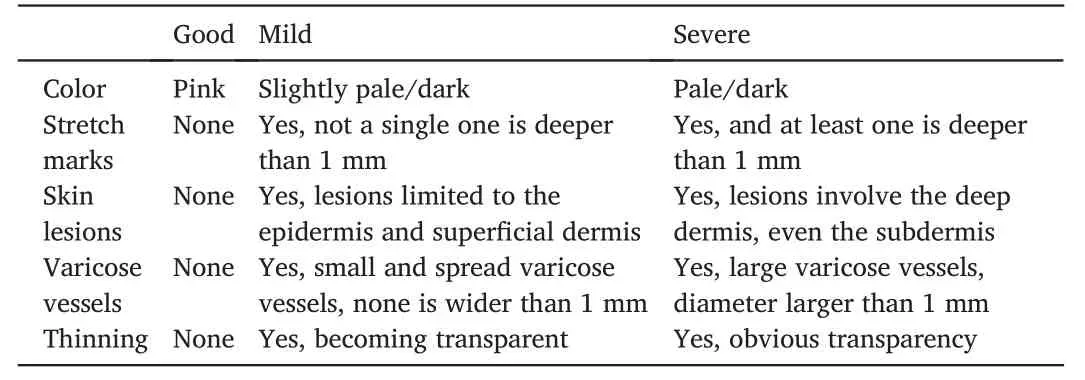
Table 1.Grading description of the five indicative signs of skin regenerative capability.
2.4.Analysis of the correlation between the risk factors and the overall skin quality
The correlation between each risk factor and the overall skin quality was statistically evaluated.We also calculated the incidences of each indicator in each skin condition and compared the differences.
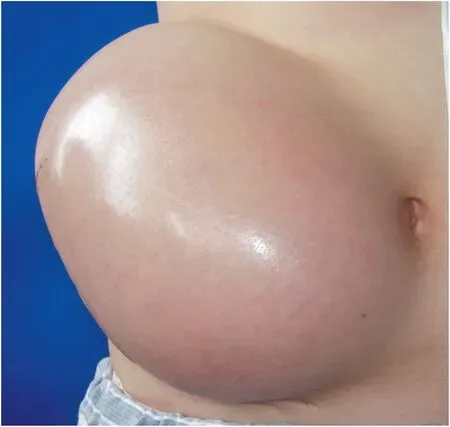
Fig.1.Expanded skin with good condition.A well-expanded skin has a pink color and no stretch marks,varicose vessels,skin lesions,and thinning.
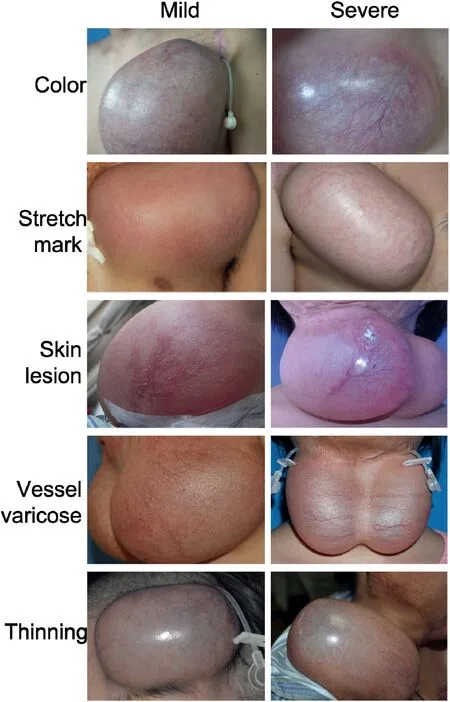
Fig.2.Patient photos of varying severity of indications.Detailed description found in Table 1.
2.5.Statistical analyses
Categorical variables are presented as counts and percentages.The Chi-squared test was used to compare groups.The Fisher’s exact test was used when the expected values of the cell counts were low while evaluating group associations at different time points.The Spearman’s test was used to examine the correlation between each risk factor and the final skin assessment.Multinomial logistic regression was used to evaluate the differences between each level.The significance was set at an α<0.05.The Statistical Package for the Social Sciences (SPSS) version 16.0 was used for the statistical analyses.
3.Results
We reviewed 158 patients with 277 expanded skin cases in our clinic between January 1,2012,and December 31,2017.A total of 94 patients had more than one expanded flap used.There were 132 expanded flaps used in female patients(47.7%)and 145 flaps in male patients(52.3%).
Among the retrospectively reviewed expansion cases,the locations of expanded skin included the forehead (27 flaps,9.7%),back (9,3.2%),cheek(52,18.8%),chest(74,26.7%),limb(22,7.9%),neck(68,24.5%),and scalp (16,5.8%).All patients had the expander inflated more than the designed volume.There were 47 flaps (10.1%) that had been expanded before the study(Table 2).
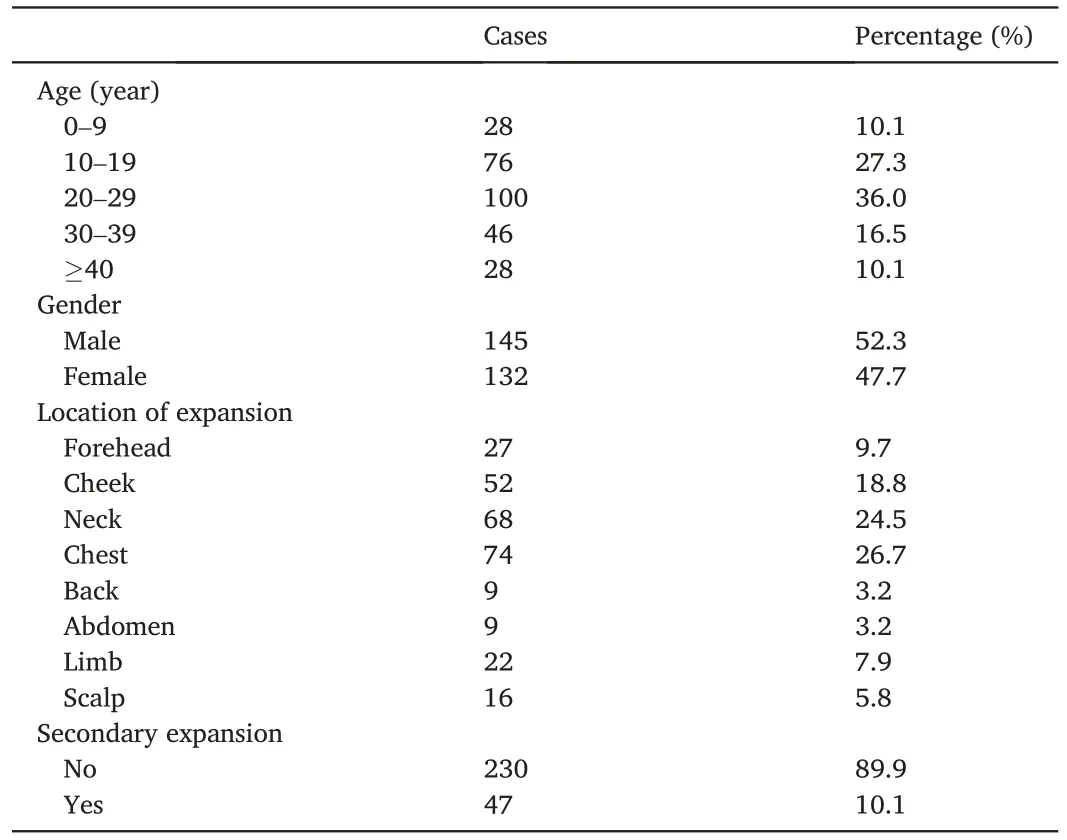
Table 2.Basic descriptions of the 277 expansion cases.
3.1.Assessment of general characteristics of expanded skin
The results showed that younger patients had a better skin texture.Around 75% (21 cases) of flaps in patients aged <10 years had a good skin texture,which was only seen in 28.8% (8 cases) of the flaps in patients aged >40 years (P=0.026)(Fig.3A).
Among all expanded flaps that were evaluated in this research,28 flaps were under the second expansion.Approximately 39.3%(11 flaps)of re-expanded flaps(11 cases)demonstrated a poor skin texture,while 14.29% (4 cases) exhibited a fair texture.There was no significant difference in skin texture between the re-expanded flaps and the flaps expanded for the first time (29.3% were poor cases,19.58% were fair cases,P=0.519) (Fig.3B).
The results showed that male patients were more prone to the deterioration of expanded skin than female patients.In the female group,34 cases(25.8%)had a poor skin texture,while 20 cases(15.2%)had a fair skin texture.Meanwhile,the rates of poor cases and fair cases in the male group were 34.5% (50 cases) and 22.8% (33 cases),respectively(P=0.024)(Fig.3C).
The skin texture in different locations also showed significant differences (P<0.01).All expanded scalp flaps (100%) had a good skin texture,and most of expanded forehead flaps and abdominal expanded flaps maintained a good skin texture (92.6% and 66.7%,respectively).Approximately half of the expanded flaps in the cheek(51.9%)and chest(50.0%)areas maintained a good skin texture.The expanded flaps in the neck and at the back area were the ones most prone to severe deterioration.In particular,only 26.5%of the neck cases and 33.3%of the back cases maintained a good skin texture(Fig.3D).
3.2.Overall occurrence rate of each indicative sign of the depletion of skin regenerative capability
We evaluated five indicative signs that could reflect the skin regenerative condition.The presence of varicose veins was the most commonly observed complication,seen in 144 cases(52.3%).Of all the cases,91(32.9%)had mild varicose veins,while 54(19.5%)had severe varicose veins.There were 41 severe (14.8%) and 75 mild (27.1%)cases of skin thinning.Severe and mild stretch marks occurred in 15(5.4%)and 16 cases(5.8%),respectively.A total of 10 cases(3.6%)presented with severe skin color deterioration,while 47 cases(17.0%)had mild skin color deterioration.A total of 34 cases(12.3%)had mild skin lesions,which were characterized by epidermal desquamation and epidermal ulceration.There were 16 cases(5.8%)of severe skin lesions,which were characterized by dermal ulceration and necrosis (Fig.4).
3.3.Occurrence of the indicative signs in different expanded locations
The results showed that the location affected the complication rate.Neck flaps had the highest complication rate.Among all cases of expanded neck flaps,36(52.9%)presented with severe varicose vessels,while another 18 cases(26.5%)had mild varicose vessels.Skin thinning was also observed in many expanded neck flaps(22 severe cases,32.4%;28 mild cases,41.2%).Skin color changes occurred on 28 neck flaps (4 severe cases,5.9%;22 mild cases,32.4%)(Fig.5A).
Varicose vessels and stretch marks were the two most common complications observed on expanded chest flaps.Among 74 expanded chest flaps,a total of 37 flaps with varicose vessels were observed (6 severe cases,8.1%;31 mild cases,41.9%).Severe stretch marks were observed in 9 flaps(12.2%),while mild stretch marks occurred in 9 flaps(12.2%)(Fig.5B).
Skin thinning was observed in 46.2%of the expanded cheek flaps(12 severe cases,23.1%;12 mild cases,23.1%).Over half of the cases of cheek flap expansion had varicose vessels (10 severe cases,19.2%;20 mild cases,38.5%)(Fig.5C).
The expanded flaps on the limbs were prone to skin thinning and varicose vessels.Over half of the limb skin expansion cases presented with skin thinning(9 mild cases,50.0%;2 severe cases,9.1%).Varicose vessels were observed on 50%of the cases(9 mild cases,45.5%;1 severe case,4.5%).There were 6 cases with stretch marks(2 severe cases,9.1%;4 mild cases,18.2%)(Fig.5D).
Varicose vessels were frequently seen in back expansion cases (6 mild cases,66.7%;1 severe case,11.1%).The occurrence rates of other complications were similar to those in the back expansion cases(33.3%-44.4%) (Fig.5E).
In the expanded abdominal flaps,the most common complications were skin lesions(1 severe case,11.1%;2 mild cases,22.2%).Mild skin thinning and varicose vessels were both observed in 22.2% of the cases(Fig.5F).
The forehead flaps had several mild complications and no severe ones(Fig.5G).Neither severe nor mild complications were observed in expanded scalp flaps.
3.4.Correlations between the risk factors and prognosis
In this study,we analyzed the correlations between the risk factors and the final skin texture.The results showed that the grades of skin color,stretch marks,varicose vessels,skin thinning,and skin lesions were significantly correlated with the prognosis.The odds ratios(OR)of skin color,stretch marks,varicose vessels,skin thinning,and skin lesions between good and poor skin conditions were 44.97,5.09,22.26,89.79,and 4.61,respectively (all P<0.001).The results indicated that the evaluation of each characteristic could be used to predict the prognosis of skin expansion.
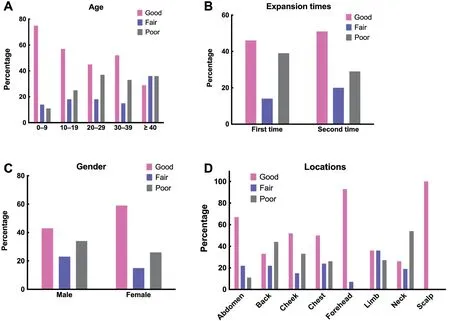
Fig.3.The demographic and general characteristics of the 277 cases.(A)Younger patients had better skin textures than elder patients(P=0.026).(B)Skin that was expanded for the second time showed no difference to that expanded for the first time.(C)Compared to male patients,female patients had better skin textures.(D)The skin texture in different locations also showed significant differences (P<0.01).
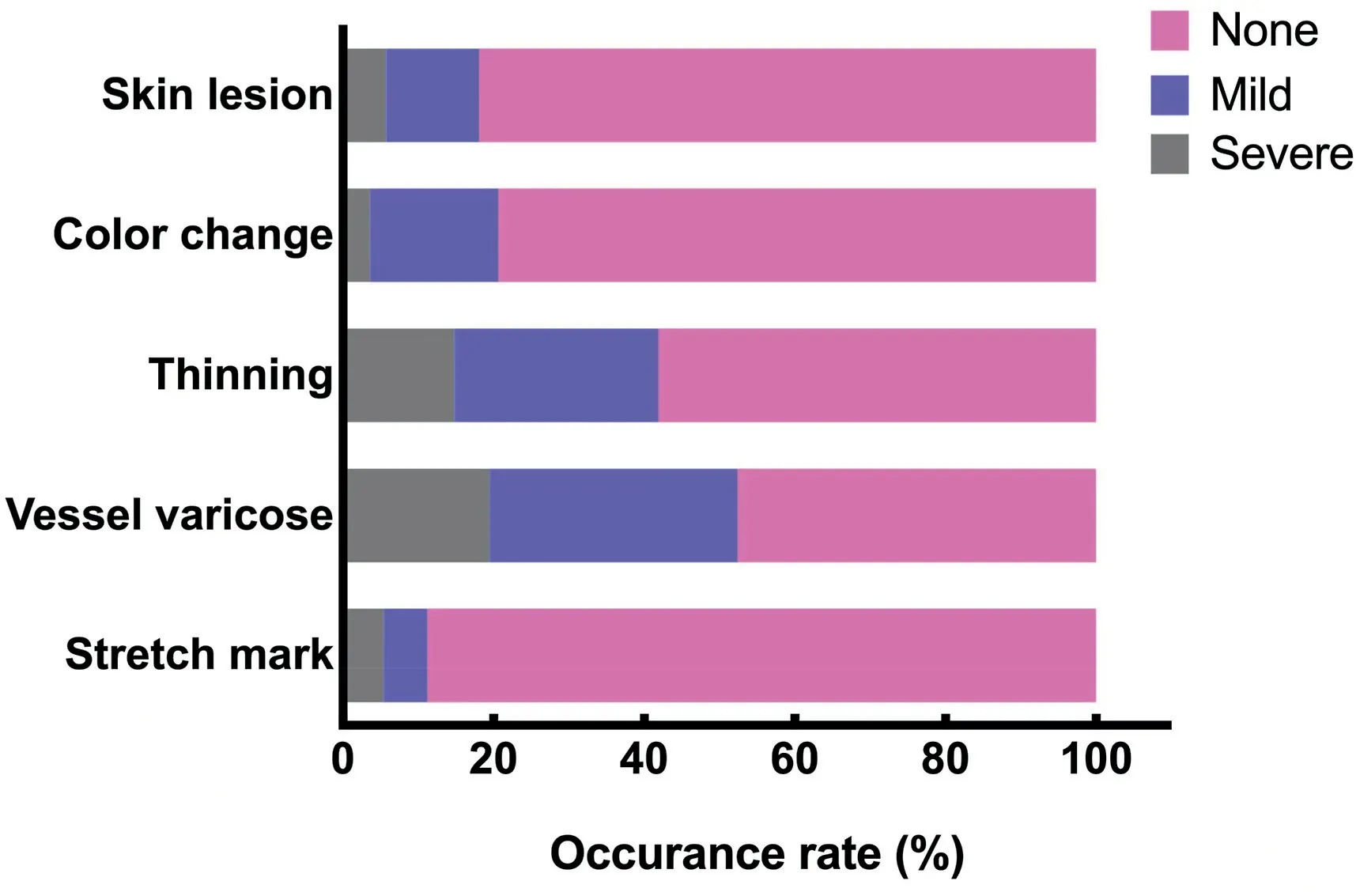
Fig.4.The overall occurrence of skin lesions,color change,thinning,varicose vessels,and stretch marks.
The results showed that four of the indicators (skin color,P=0.024;varicose vessels,P=0.0015;skin thinning,P<0.001;skin lesions,P=0.013) showed differences in the occurrence and severity between skin condition grades.The difference in stretch marks was not significant between good and poor skin conditions (P=0.0511).These results indicated that skin color,varicose vessels,thinning,and skin lesions were more significantly correlated with the status of the skin condition than stretch marks.
4.Discussion
Repairing and reconstructing skin defects can be challenging.The ideal method of repair is to reconstruct the defect using autologous skin tissue with an integral structure and function.Unfortunately,traditional methods,including skin grafts or skin flaps,require the usage of tissues from one site to restore another site.9Compared with traditional treatments mainly focusing on the coverage of defects,skin expansion offers the recovery of both appearance and function,thus avoiding donor site morbidity.1,2Skin expanders induce mechanical stretching,which stimulates cell proliferation and activates fibrin and collagen synthesis to achieve in vivo regeneration of the overlaying skin.10,11However,the biggest obstacle in the application of skin expansion techniques is the inherent limited regenerative capability of local skin tissues.12-15So far,there is still no evaluation system suitable for assessing and predicting the regenerative capability of expanded skin.
Our goal was to conduct a retrospective study and analysis of skin expansion cases in the recent 5 years in our facility and to design a method that can predict skin regenerative capability by analyzing the indicative signs of skin regeneration depletion.We performed and described a review of the following common complications in the expansion process:skin thinning,stretch marks,varicose vessels,color change,and skin lesions.12,13,15According to our findings,the skin regenerative capability of different sections of the body parts was different.For instance,in our study,an expanded scalp showed no texture deterioration.Additionally,92.6% of forehead expansion cases and 66.7% of abdominal expansion cases showed satisfactory skin regeneration.On the contrary,only approximately 50%of the cheek and chest skin expansion cases maintained satisfactory regenerative capability.The regenerative capability of the neck and back regions was even lower than that of the cheek and chest regions.
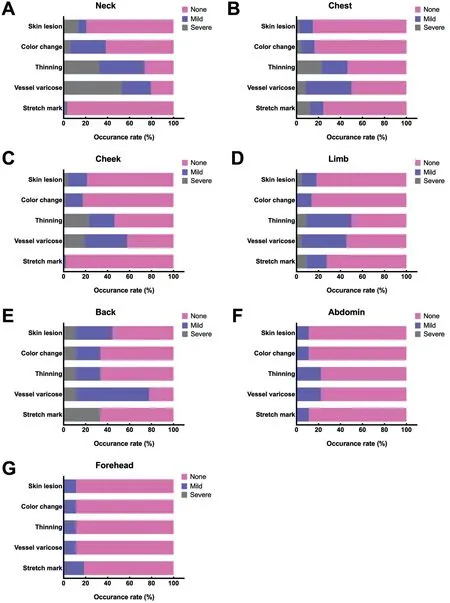
Fig.5.The occurrence of indications in different expanded locations.Thinning and varicose vessels were most commonly seen in the neck(A),chest (B),cheek(C),and limbs(D).In the back area,varicose vessels were the most common indications(E).No severe level of indications was found in expanded abdominal skin(F)and forehead (G) areas.
The reason for this phenomenon has not been fully clarified yet.It may be related to several reasons.Expansion of the forehead skin and scalp is performed by placing the expander beneath the galea,which is well circulated and more resistant to stretching.6,16Hair follicles in the scalp contain large amount of stem cells,which enhance scalp skin regeneration.17,18The lower portion of the expanded neck skin is more prone to ulceration because it is continuously compressed by the expander due to gravity.Furthermore,the dermal thickness of the neck is relatively thin.Although the back skin had a thick dermis at the beginning of the expansion,the high occurrence of a deteriorated skin texture might be caused by constant compression due to the sleeping position,thereby resulting in poor circulation and depressed regeneration.
Although the indicative signs of regenerative capability depletion in all cases were similar in general,the occurrence rates of the different indications in the different sections of the body were quite different.Mild varicose veins occurred in all skin expansion cases except in the scalp and forehead cases.Severe varicose vein cases were more frequently seen in the neck skin expansions.As a matter of fact,over 50% of the neck expansion cases presented with severe varicose veins.Thinning was also a complication frequently seen in neck expansion cases.Around 32.4%of the cases showed severe regional thinning,while 41.2%of cases showed minor thinning.On the other hand,stretch marks were rarely seen in the neck region.However,they often occurred in the back,limb,and chest regions.Approximately 1/3 of the back skin expansion cases showed severe stretch marks,which were possibly due to the thicker dermis in this region.During the expansion process,stretch marks were due to delayed collagen synthesis,resulting in thinning of the dermis and widening of the stretch marks.On the other hand,stretch marks were not seen when the expander was placed beneath the muscular layer,as seen in the forehead and scalp regions.Skin lesions were more frequently seen in the expansion of the back skin,which were possibly due to constant compression when sleeping in the supine position.Change in skin color was seen in all other cases except for scalp expansions.
The results also showed that younger and female patients had superior skin regenerative capability than the elderly and male patients.Tissue regenerative capability,stem cell activity,and compliance of skin were better in children than in adults.These aforementioned reasons might explain why skin texture deterioration occurred less in younger patients.19Male patients had worse skin quality than female patients,possibly due to smoking and lack of skin care.20Extra attention to early signs of skin regenerative deterioration is advised when following up with male patients.Through statistical analysis,we realized that the five indicative signs mentioned above were closely related to the prognosis of skin regeneration (OR=44.97,5.09,22.26,89.79,4.61 respectively).
According to our experience,delaying the expansion process can only help prevent the situation from worsening when the expanded skin shows mild signs of regenerative difficulty.Temporary improvement of the signs was seen in some patients;however,worsening was observed once the expansion process was resumed.Therefore,we believe that different measures should be taken depending on the severity of skin regenerative capability depletion.
Based on this retrospective study,we designed the following evaluation chart to analyze and predict the skin regenerative capability.For each indication,the scores were as follows:2,1,and 0.A score of 2 represented none,a score of 1 represented mild,and a score of 0 represented severe.We then added the scores and factored in the appearance of severe indication.We then divided the skin regenerative capability into four grades(Table 3).

Table 3.Grading system for expanded skin conditions.
Grade A corresponded to skin with a good condition;thus,expansion was continued.Grade B corresponded to fair skin with an early quality drop.For grade B patients,the expansion was suspended for 2 weeks to allow recovery.Thereafter,expansion was resumed.If the texture quality dropped at 2 weeks,an intervention was performed immediately.Grade C corresponded to poor skin quality with a progressing drop.Expansion was suspended,which had minimal effect in rescuing skin quality.Intervention was performed immediately in grade C patients.For grade D patients,the expanded skin had severe complications;thus,skin expansion was immediately terminated.Skin flap transplantation was then performed.
Nowadays,various interventions designed to enhance the regeneration of expanded skin have been proposed.Stem cell transplantation is perhaps the most favored method for promoting tissue regeneration.21,22Previously,our research group conducted and published a series of preclinical studies regarding the effect of stem cells in stimulating skin expansion.The transplantation of bone marrow mesenchymal stem cells,either intradermally or intravenously,was proven to be effective in enhancing expanded skin regeneration.8,23Adipose-derived stem cells also showed pleasing results in skin expansion stimulation.21Other than stem cell therapy,autologous fat transplantation also aided in skin tissue regeneration.24,25When injected subcutaneously in the expanded skin,fat tissue can buffer the tension being applied on the superficial skin and can prevent texture deterioration.
5.Conclusion
By analyzing the 277 skin expansion cases in our department,we demonstrated the correlation between the indicative signs of deterioration and skin regenerative capability.Based on these results,we proposed an evaluation system for post-expansion skin quality estimation.This system aims to reveal the condition of the expanded skin and to aid in making clinical decisions regarding treatment to avoid complications.
Ethics approval and consent to participate
This study was approved by the Ethics Committee of Shanghai Ninth People’s Hospital and complied with the principles of the Declaration of Helsinki.
Consent for publication
All the patients gave written informed consent to publish the data contained within this study.
Competing interests
The authors declare that they have no competing interests.
Authors’ contributions
Zhou SB:Conceptualization,Methodology,Investigation,Formal analysis,Writing-Original draft.Zhou SZ:Investigation.Chiang CA:Investigation,Writing-Original draft.Guo JH:Investigation.Xie Y:Resources.Liu K:Resources.Li QF:Writing-Review and editing,Supervision.
Acknowledgments
This study was supported by the National Natural Science Foundation of China(no.81971848,no.81620108019,and no.81501678),Clinical Research Plan of SHDC (SHDC2020CR1019B,SHC2020CR402),Shanghai Municipal Key Clinical Specialty (shslczdzk00901),and Innovative Research Team of High-level Local University in Shanghai(SSMUZDCX20180700).The authors would like to thank Dr.Hui Liu for biostatistical assistance.
 Chinese Journal of Plastic and Reconstructive Surgery2022年2期
Chinese Journal of Plastic and Reconstructive Surgery2022年2期
- Chinese Journal of Plastic and Reconstructive Surgery的其它文章
- Foreword from Professor Yu-Ray Chen
- Major and minor risk factors for postoperative abdominoplasty complications:A case series
- Anesthetic injection pain and hematoma occurrence during upper blepharoplasty:Comparison between thin needles and thick needles
- Assessment and management of immature facial scars by non-surgical methods
- Minimally invasive method to treat a rare wrist injury with simultaneous fractures of the scaphoid and hook of hamate:A case report and literature review
- Bowen’s disease with multiple lesions of the penis and scrotum:A case report
